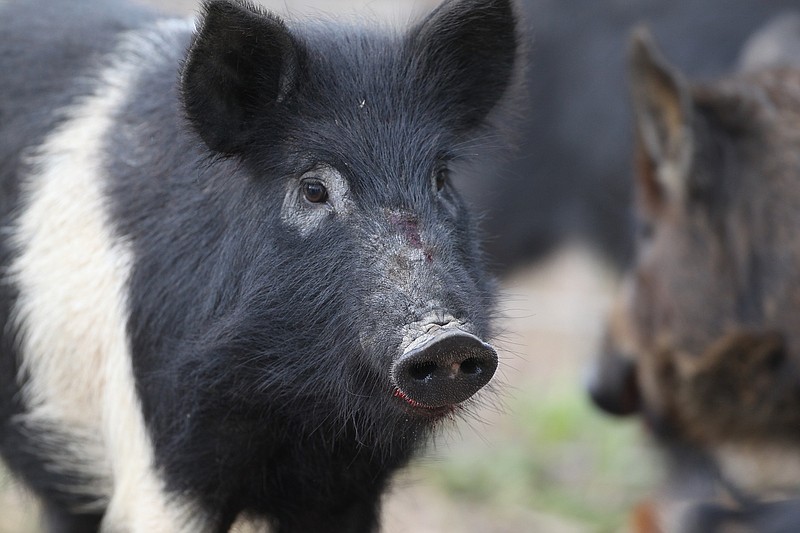LITTLE ROCK - The Arkansas Department of Agriculture has published a new handbook about dealing with problem feral hogs.
The Arkansas Feral Hog Handbook was created to provide a brief overview of feral hog issues as well as provide information resources available to landowners.
Feral hogs are a non-native, invasive species that present a significant risk to human and livestock health, agriculture, and natural resources, according to the department. In Arkansas, damage from feral hogs is estimated at $19 million annually.
Populations of feral hogs live in Miller County and at times Texarkana residents encounter the wild pigs within the city limits.
The handbook includes contact information, websites and brief explanations of the resources offered by state and federal agencies and other entities.
It contains information on the Arkansas Feral Hog Eradication Task Force, feral hog reporting, a summary of the U.S. Department of Agriculture Feral Swine Pilot Program, state laws and rules regarding feral hogs, and other resources with information about feral hogs and the damage they cause.
The handbook is being distributed throughout the state with assistance from partner organizations, including the Arkansas Association of Conservation Districts, University of Arkansas Cooperative Extension Service, Arkansas Game and Fish, and Arkansas Farm Bureau.
Copies can be requested by emailing [email protected]. An online version is available through the department's website, agriculture.arkansas.gov.
The handbook was made possible through a grant funded by the USDA's Natural Resources Conservation Service.

